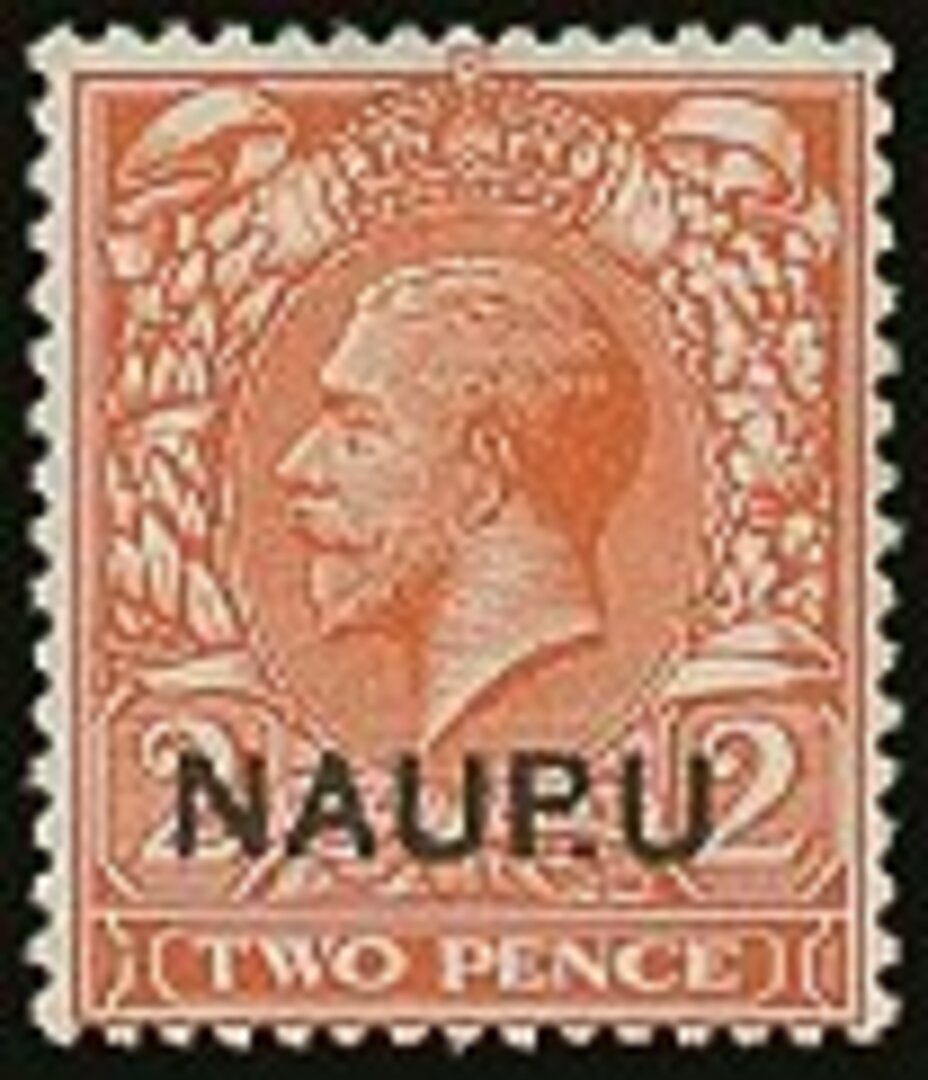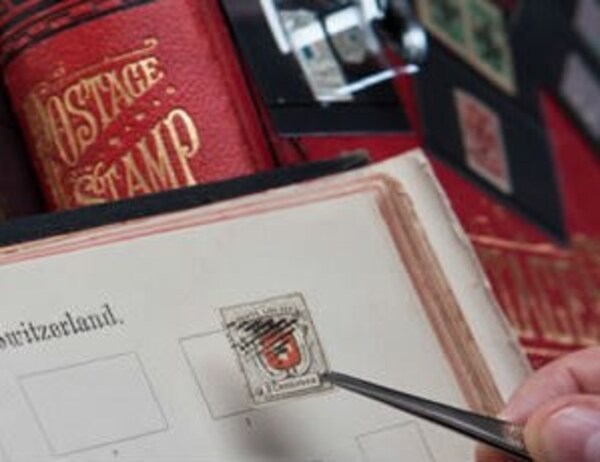Nauru is a tiny raised coral atoll situated in the South Pacific with both Australia and New Zealand approximately 2000 miles away. Following its discovery in 1798 it became a whaling station and its capital Yaren an inter-island fishing port. The island extends to just over 8.1 square miles, it has a coastal perimeter road that is 12 miles long, an international airport and a population to-day of just under 5,000.
From 1888 the island had been a part of the German Marshall Islands. The outbreak of war in Europe in 1914 provoked an immediate British response to ensure both a strategic supply of organic phosphates and to prevent German forces being able to develop a naval base from which to attack Allied merchant shipping. The result was to send the proverbial “Gun Boat”, the Australian Navy cruiser H.M.A.S “Melbourne”, arriving at Nauru on the 9th September 1914 whereupon a German surrender was negotiated. The administration of postal services was shared by Australia, New Zealand and Great Britain. The first stamps were Australian Kangaroos and King’s Head issues, overprinted “N.W. Pacific Islands,” subsequently replaced by Geo V British stamps, overprinted “NARU”.
Owing to a combination of factors, including poor communications, the voyage from England carrying stocks of the new stamps taking three months, issues with quality control and basic human failings, many printing inconsistencies arose
What of the stamps themselves? These were the twelve lower value adhesive stamps of Great Britain bearing George V’s head with values to 1/-. With the exception of the 6d which was printed by the Stamping Department of the Board of Inland Revenue, the others were the typo-graphed by Harrison & Sons.
Sitting in the South Pacific Ocean it seems entirely appropriate, though of course a coincidence, that the higher values of 2sh. 6d, 5sh and 10sh should be “Seahorses”. These were printed by De la Rue (the first 2sh 6d is a deep sepia brown), Waterlow Bros. (the first 5sh in rose carmine and the 10sh also printed by Waterlow Bros in indigo-blue). Bradbury Wilkinson and Co also printed some of the later issues. These printers were often interchanged during the period 1915-1923 with a total of nine batches of stamps being sent from England.
There are numerous variations in the shades from the different printing houses but the overprinting of all values was done by the Stamping Department at Somerset House. The overprinted issues provide much of the interest in these popular issues with many listed varieties, including worn type, re-entries, double and albino overprints, different shades of ink used, together with incomplete and broken lettering. Both the lower and higher values bore an overprint in varying shades of grey/black ink. The exception was the 10/- where red ink was used.
Also of note are the actions of the Post Master who accepted the arrival of the first batch of stamps at the end of May 1916. Having done so, a circular was issued saying that none would be used until all the remaining stock of NWP overprints had run out. Shortly afterwards he received his military call-up and returned to Sydney to enlist, taking with him a significant selection from the newly arrived first batch. Their whereabouts have never been ascertained though wartime philatelic interest amongst dealers and collectors alike was at its peak.
Sadly, Nauru whose real economy was based on the export of phosphates from the ancient deposits of bird “guano” has gone into decline as the deposits were mined out. More recently support has been provided by the international community including Australia. The country became the world’s smallest independent self-governing republic in 1968 and is a member of the British Commonwealth and the United Nations. Meanwhile modern stamps from Nauru are colourful and show many aspects of day to day life on the island, providing a much need income stream.


 General
General
 General
General
 General
General